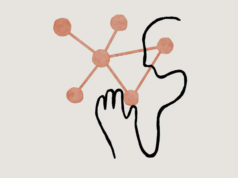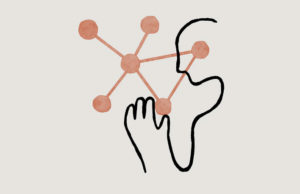SAN FRANCISCO.- Google took its long-awaited plunge into the wirelessworld Monday, announcing that it was leading a broad industry allianceto transform mobile phones into powerful mobile computers that couldaccelerate the convergence of computing and communications.
The technology is expected to provide cellphone manufacturers andwireless operators with capabilities that match and potentially surpassthose using smartphone software made by Apple, Microsoft, Nokia, Palm,Research In Motion and others. In contrast with that of itscompetitors, Google’s software will be offered freely under «opensource» licensing terms, meaning that cellphone manufacturers will beable to use it at no cost and be free to add new features todifferentiate their products.
As speculation about Google’s efforts trickled out over the pastseveral months, expectations that it would build what has been called aGoogle Phone or GPhone have mounted.
But there will be no branded Google Phone. The software running on thephones will not even display the Google logo. Instead, Google is givingthe software away to others who will build the phones. The companyinvested heavily in the project to ensure that all of its services wereavailable on mobile phones. Its ultimate goal is to cash in on theeffort by selling advertisements that appear before mobile phone users,just as it does on the Internet.
«We are not building a GPhone; we are enabling 1,000 people to build aGPhone,» said Andy Rubin, Google’s director of mobile platforms, wholed the effort to develop the software.
Rubin said the open-source strategy would encourage rapid innovationand lower the bar to entry in the highly competitive cellphone market,where software accounts for an increasing share of the cost of making aphone.
Mobile phones based on Google’s software are not expected to beavailable until the second half of next year. They will be manufacturedby a variety of companies, including HTC, LG, Motorola and Samsung, andbe available in the United States through T-Mobile and Sprint.
The phones will also be available through the world’s largest mobileoperator, China Telecom, with 332 million subscribers in China, and theleading carriers in Japan, NTT DoCoMo and KDDI, as well as T-Mobile inGermany, Telecom Italia in Italy and Telefónica in Spain.
The 34-member Open Handset Alliance, as the group is called, alsoincludes many of the leading makers of mobile phone chips, likeBroadcom, Intel, Qualcomm and Texas Instruments, as well as SiRFTechnology Holdings, Marvell Technology Group, Nvidia and Synaptics.EBay – which owns the Internet calling service Skype – NuanceCommunications, NMS Communications and Wind River Systems are alsomembers of the group.
Google’s long list of powerful partners illustrates the substantialinroads the company has made in the highly competitive industry, aswell as the challenges still facing the company. For example, the twolargest cellular carriers in the United States, AT&T and VerizonWireless, which together account for 52 percent of the market, are notpart of the alliance.
Still, alliance members, who contributed technology to the project, said they had high hopes for it.
«Just like the iPhone energized the industry, this is a different wayto energize the industry,» said Sanjay Jha, chief operating officer ofQualcomm, which makes chips used in wireless phones. Jha said theGoogle technology would bring better Internet capabilities tomoderately priced phones. He also said that innovation couldaccelerate, as developers would be able to enhance the software as theysaw fit.
Users would have the ability to load up their phones with new features and third-party programs.
«Today the Internet experience on hand-held devices is not optimized,»said Peter Chou, chief executive of HTC, one of the largest makers ofsmartphones. «The whole idea is to optimize the Internet experience.»Chou, whose company makes several phones based on Microsoft’s software,which are largely aimed at business users, said the phones based onGoogle’s technology would probably be marketed primarily to consumers.
The alliance represents a bold move by Google and its partners thatechoes the company’s efforts in the desktop computing industry to giveaway software and services and gain revenue through advertising. Assuch, the new software strategy is a potential competitive threat toMicrosoft and other mobile software and hardware designers.
John O’Rourke, general manager of Microsoft’s Windows Mobile business,said he was skeptical about the ease with which Google would be able tobecome a major force in the smartphone market. He pointed out that ithad taken Microsoft more than half a decade to get to the stage wherethe company now does business with 160 mobile operators in 55 countriesaround the world.
«They may be delivering one component that is free,» he said. «You haveto ask the question, what additional costs come with commercializingthat?»
Microsoft is expected to sell about 12 million Windows Mobile phonesthis year, accounting for about 10 percent of the smartphone market,according to International Data Corp., the market research and datacompany. Apple, which began selling its iPhone last summer, accountsfor 1.8 percent of the market.
The Google-led alliance also presents a potential conundrum to cellularoperators, who have invested billions to build their networks andacquire customers. As phones become more like computers, they fear theywill miss out on the potential bonanza of mobile advertising as Googleand others take their share of the revenue. Jha said he believed thatGoogle was working with carriers to reach common ground.
Google’s entry into the phone software business could present pricklyissues for at least one other person: Eric Schmidt, the company’s chiefexecutive. Schmidt sits on the board of Apple, and while Google is notmaking or selling phones, it will be providing a phone operating systemto Apple competitors.
A brief demonstration of the Google software suggested that phones madeusing the technology would have features and design similar to theApple iPhone. Rubin demonstrated a hand-held touch-screen device thatgave an immersive view of Google Earth, the company’s three-dimensionalvisualization software.
Rubin, a veteran Silicon Valley designer, said the software system thatGoogle had designed was based on the Linux operating system and SunMicrosystems’ Java language. It is designed so programmers can easilybuild applications that connect to independent Web services.
The alliance plans to make available tools for third-party programmers,called a software developers’ kit, next Monday, Rubin said. But thecore technology will not be made available under an open-source licenseuntil it is commercially ready next year, he said.
Rubin also said that the Google technology could be used in otherportable devices, including small hand-held computers and carnavigation systems.
Google’s phone software is named Android. Rubin was involved in thedesign for the Sidekick cellphone while running a company calledDanger. Rubin later founded a company named Android, which Googleacquired in 2005.
Fuente: International Herald Tribune


















